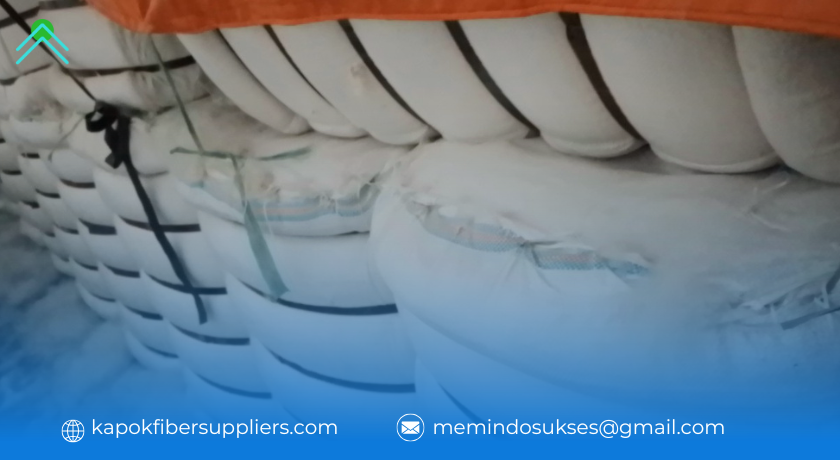
Kapok, often referred to as “silk cotton,” is a remarkable natural fiber that has been treasured for centuries. Derived from the fluffy seeds of the Ceiba pentandra tree, kapok boasts unique properties that make it an ideal material for a variety of applications. In recent years, its environmental benefits have gained increasing attention, with many seeking sustainable alternatives to synthetic materials. At CV Media Mitra Indonesia, we are proud to highlight the diverse uses and eco-friendly attributes of kapok, showcasing its potential to contribute to a greener, more sustainable future.
What is Kapok?
Kapok is the light, fluffy fiber that surrounds the seeds of the kapok tree, native to tropical regions in Asia, Africa, and South America. The fibers are soft, lightweight, and water-resistant, making them highly valuable in both traditional and modern industries. The kapok tree itself can grow up to 70 meters tall and produces large pods that contain the seeds surrounded by the fibrous material. Once harvested, the kapok fiber is carefully extracted and processed for various uses.
Unique Properties of Kapok
Kapok stands out for several reasons. First and foremost, its lightweight nature makes it an excellent material for cushioning and insulation. Unlike synthetic alternatives, kapok is naturally hypoallergenic and resistant to moisture, mold, and mildew. These characteristics make it ideal for use in products where comfort and durability are essential.
Additionally, kapok has an impressive buoyancy, which is why it has historically been used as filling for life vests and flotation devices. The fiber is not only light but also capable of resisting water absorption, allowing it to retain its buoyant properties in aquatic environments.
Sustainable and Eco-Friendly
One of the most compelling reasons to embrace kapok is its eco-friendly nature. Unlike synthetic fibers derived from petrochemicals, kapok is a completely natural product. It requires little water or pesticides to grow, and its cultivation can help reduce deforestation by promoting agroforestry practices. Furthermore, kapok trees help improve soil quality and provide a habitat for wildlife in tropical areas.
At CV Media Mitra Indonesia, we believe in the importance of sustainability, and the use of kapok aligns perfectly with our mission to support environmentally conscious practices. Kapok trees are a renewable resource that contribute to carbon sequestration, helping to mitigate climate change in the long term.
Versatile Uses of Kapok
Kapok’s versatility is one of its most impressive features. Here are just a few of the many applications of this natural fiber:
- Bedding and Pillows: Kapok has long been used as a filling for mattresses, pillows, and cushions due to its softness and comfort. It provides a cloud-like sensation and remains cool, making it ideal for warmer climates.
- Eco-friendly Insulation: The insulating properties of kapok make it an excellent choice for eco-friendly insulation in buildings and clothing. Its lightweight structure traps air pockets, helping to regulate temperature and reduce energy consumption.
- Flotation Devices: Thanks to its buoyancy, kapok was historically used to fill life vests and other flotation devices. Its natural water resistance ensures that it maintains its floating capabilities even when wet.
- Packaging Material: With growing concern over plastic waste, kapok is being explored as a sustainable alternative to packaging materials. Its lightweight, biodegradable nature makes it a promising option for eco-conscious packaging solutions.
- Textiles: Though less common, kapok is also used in textiles, particularly in areas that value traditional craftsmanship. Its softness and durability make it suitable for clothing and accessories, providing a unique, natural alternative to synthetic fabrics.
The Future of Kapok
As more industries and consumers look for sustainable alternatives, the potential for kapok continues to grow. With increasing awareness about environmental issues and the impact of plastic pollution, natural fibers like kapok offer an opportunity to reduce our dependence on harmful materials. At CV Media Mitra Indonesia, we are excited to continue supporting the use of kapok in various products, promoting both innovation and sustainability.
Conclusion
Kapok is more than just a natural fiber—it’s a testament to the power of nature’s resources and their ability to support a sustainable future. Whether used for insulation, bedding, or eco-friendly packaging, kapok offers a wealth of benefits that go beyond its lightness and comfort. With its impressive environmental credentials and versatile applications, kapok is poised to play an increasingly important role in helping to create a more sustainable world.
At CV Media Mitra Indonesia, we are proud to highlight the value of kapok and encourage its adoption across industries, ensuring that this incredible natural resource remains an essential part of a greener, more sustainable tomorrow.

